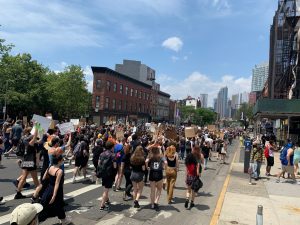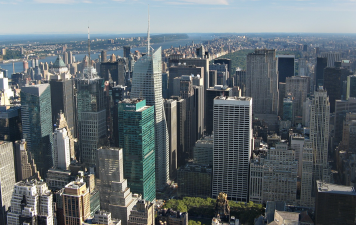Our Parks Are Secure. What About Our Streets?
When are the police finally going to reclaim the streets from speeding and dangerous driving?
 When will pedestrians and cyclists be able to feel safe and secure on New York City streets? Photo: Bryan Goebel.
When will pedestrians and cyclists be able to feel safe and secure on New York City streets? Photo: Bryan Goebel.For decades New Yorkers feared public spaces like Times Square, Herald Square and Bryant Park. They feared the people who congregated in these spaces and opposed efforts to create new public spaces or expand existing ones. Then, things changed. Crime rates plummeted, and the police worked with community groups — and, in the case of the great squares and parks, Business Improvement Districts and conservancies — to restore a sense of order and control. According to Tim Tompkins of the Times Square BID, that "paradigm shift" is what has allowed the premier public gathering places like Central Park and Times Square to flourish.
In a recent interview with Streetsblog, Tompkins evokes "Maslow’s Hierarchy of Needs," a traditional marketing and psychology concept, to explain why ensuring public safety was the crucial first step in the renaissance of Times Square, and a pre-requisite for reclaiming sections of Broadway for pedestrians and public space.
You need to take care of the basics of comfort and security first before you can even think about anything else. That played out with respect to nature and parks, but wasn’t really playing out in the streets and sidewalks. I think not only in Times Square and in New York City, but in a bunch of places… we’ve been paying attention to that. And that’s been the paradigm shift that’s driving a lot of this.
Tompkins’ assessment has important implications for the movement to tame the streets. If establishing basic security is a fundamental prerequisite for widespread public use of any space, what about creating order and safety on our streets?
Crime and the perception of disorder have plummeted in public spaces like parks, squares, and sidewalks. But it is abundantly clear to anyone who bicycles, walks or drives in New York City that this isn’t true in the streets. Speeding and dangerous driving are epidemic. This perception is backed by study after study and by the reality that thousands of cyclists and pedestrians are struck every year. The dangerous chaos on the streets also means very few children or older people feel comfortable bicycling, and only a small portion of people who consider cycling actually ride regularly.
It will take decades before the Department of Transportation can re-engineer most of the city’s big streets for cyclists and pedestrians. Even then, laws must be enforced. New York City has changed the equation in parks and on the sidewalks. What about the streets?

